Is QuillBot AI Detector Accurate? 2025 Test
Summary
Broader industry challenges—rapidly evolving AI models and the impossibility of 100% accurate detection—further limit QuillBot’s reliability. For professional workflows, the article recommends using multiple detectors and human review. It also highlights GPTHumanizer as a stronger alternative, offering context-aware rewriting and more natural output. Overall, QuillBot is a useful screening tool, but not dependable for critical verification.
Ever wondered if that article you're reading was crafted by human hands or churned out by AI? With artificial intelligence flooding everything from blog posts to academic papers, this question has become more relevant than ever.
Enter QuillBot's AI Detector—a free tool promising to separate human writing from machine-generated content. But here's the million-dollar question: Is QuillBot AI detector accurate?
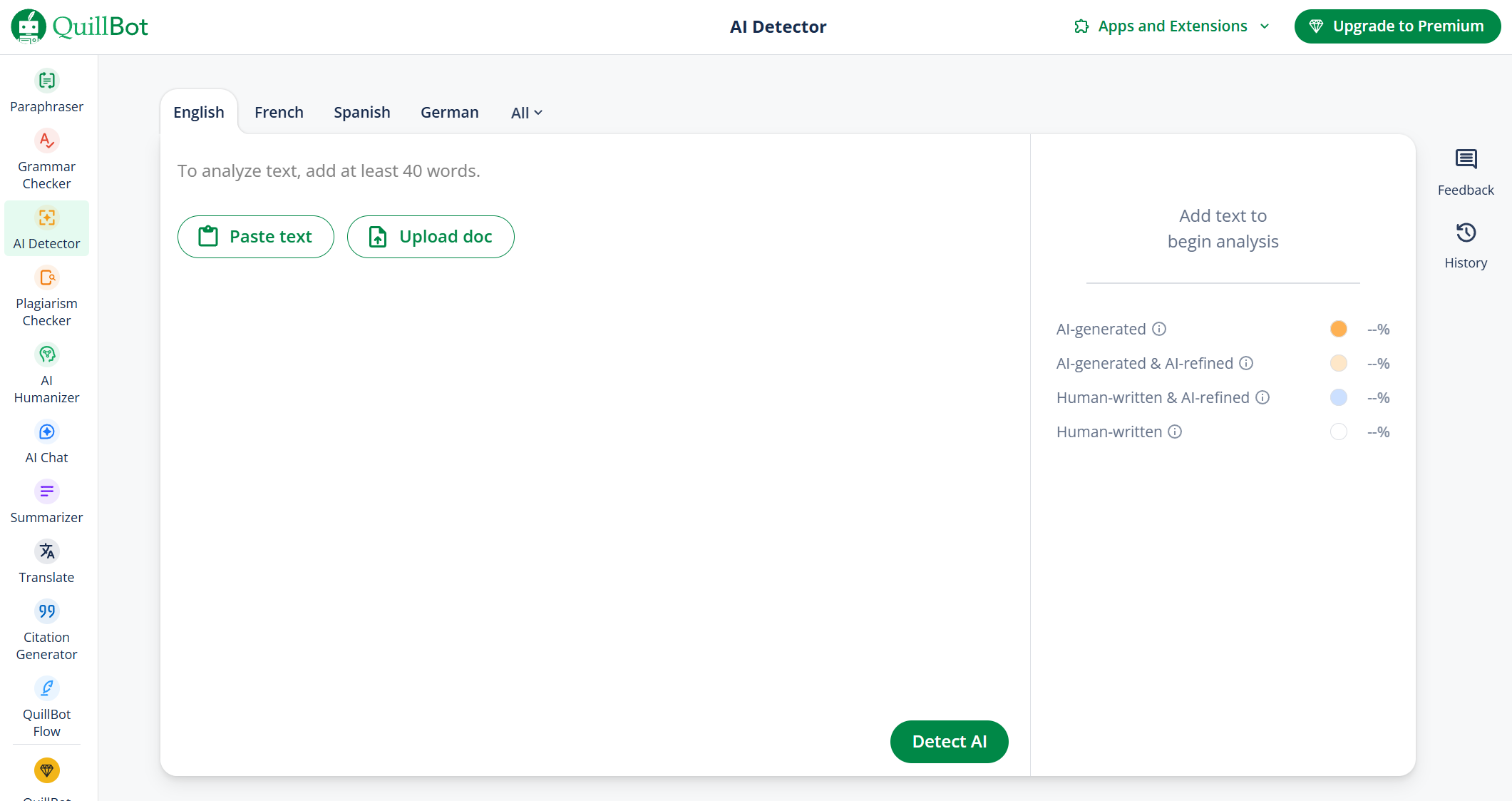
Is it capable to discriminate between genuinly human-written content and AI-generated one? Moreover, what is its relation to more developed detection metods and more advanced platforms, such as GPTHumanizer?
Here we are not only discussig a theory, but we will carry out throug actual practival tests. We will display what it is able to and unable to detect, we will also indicate a shocking weakness you may not have thought of, and an alternative method that is taking the content detction world to the next level.
Ready to discover the truth? Let's dive in!
How QuillBot's AI Detector Actually Works
To understand whether QuillBot AI detector is accurate, we first need to understand its underlying technology.
The tool uses machine learning algorithms trained to identify patterns commonly found in AI-generated text. It analyzes linguistic markers, sentence structures, and writing patterns that typically indicate artificial generation.
What QuillBot Does Well
Quick Analysis: Simply paste your text and receive instant feedback. The interface is straightforward and requires no technical expertise.
Identifies Basic AI Patterns: When analyzing unmodified AI output with clear artificial patterns, QuillBot generally performs well at recognition.
Accessible Tool: The free version makes AI detection available to educators, researchers, and content professionals who need basic screening capabilities.
QuillBot’s Areas of Weakness
Complex Content Challenges: More advanced AI writing tools make detection harder due to sophisticated outputs. QuillBot’s accuracy drops when faced with more finessed content.
Prone to False Positives: It has a tendency to flag authentic human-written content as AI-generated. This often happens when it encounters creative or offbeat writing styles.
Lacks Style Recognition: It might not be able to recognize various writing types, such as academic writing, creative content, or highly technical or specialized documentation.
It can act as a decent screening tool, but knowing these shortcomings is important before using it in a classroom or workplace setting.
Real-World Testing: Evaluating QuillBot's Performance
We conducted systematic testing to determine how accurate QuillBot AI detector actually is. Three distinct test scenarios provided insights into real-world performance:
Test 1: Unmodified AI Content
We analyzed a straightforward text sample generated by ChatGPT without any human editing or modification.
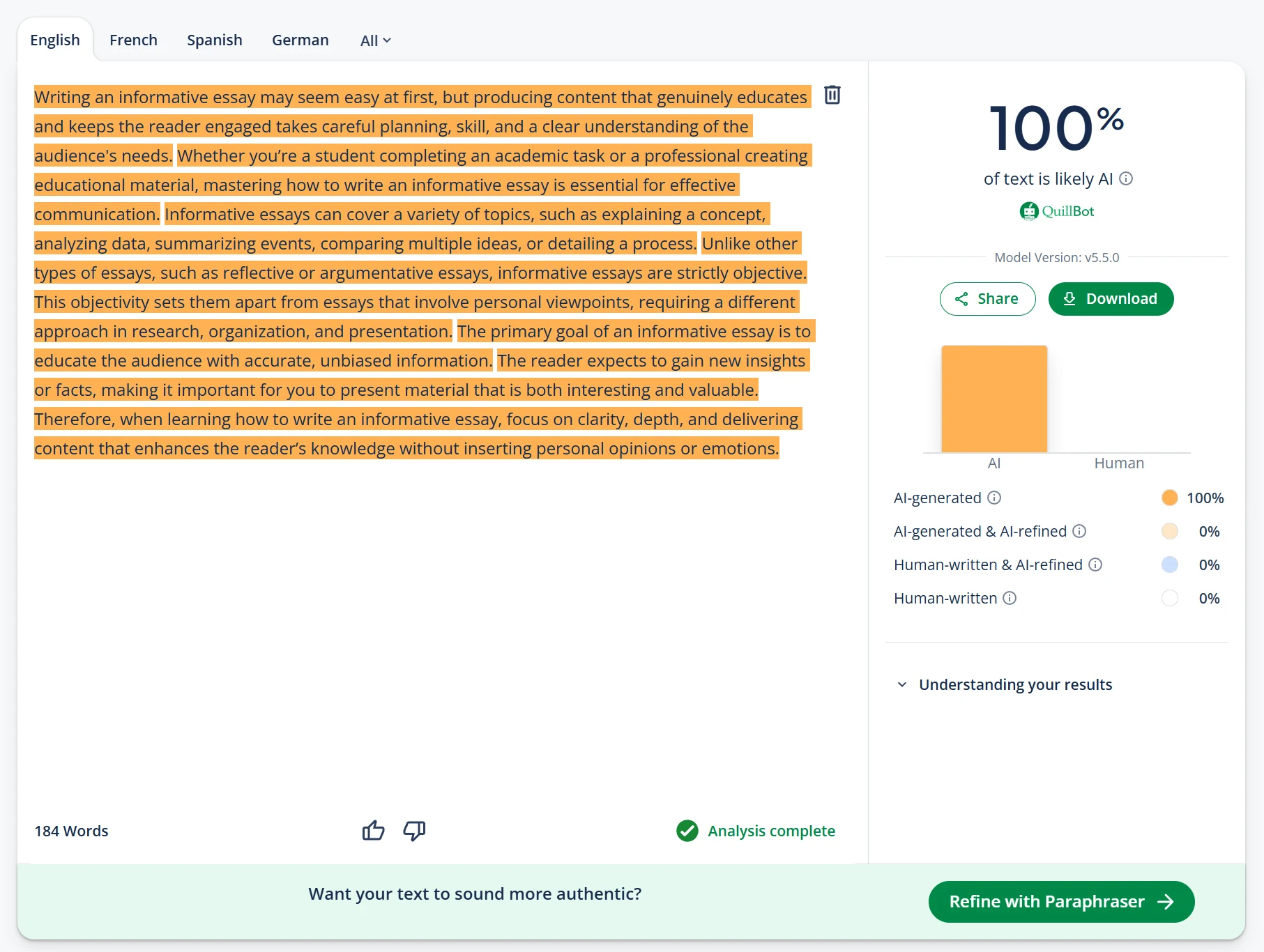
Result: QuillBot correctly identified the content as AI-generated with high confidence.
Analysis: For basic AI-generated content with typical patterns, QuillBot demonstrates reliable detection capabilities.
Test 2: Human-Edited AI Content
Next, we tested AI-generated content that had been professionally edited by humans, including restructured sentences, improved flow, and added contextual elements.
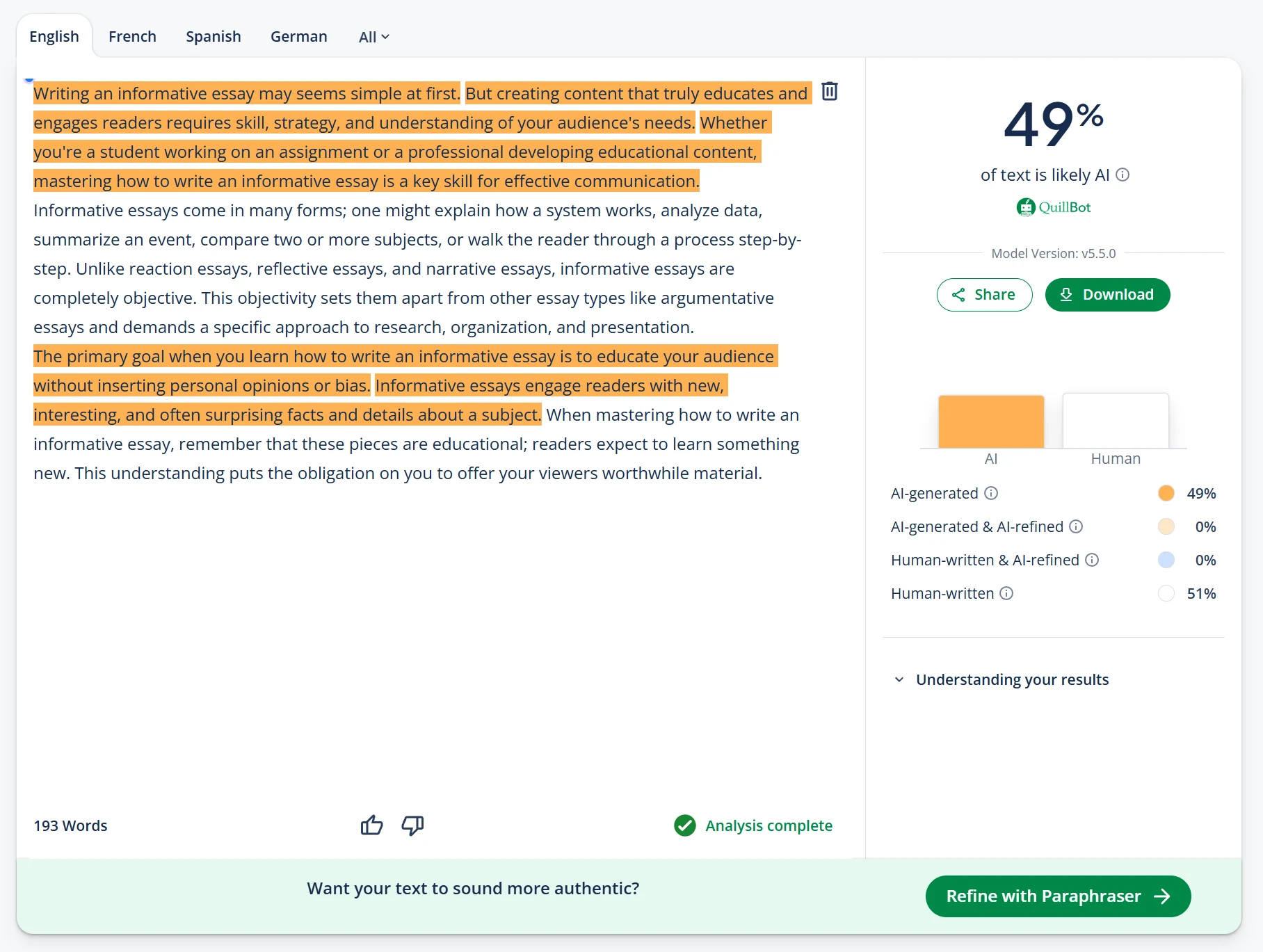
Result: Mixed performance. The tool showed uncertainty, with some sections flagged and others not detected.
Analysis: QuillBot struggles with hybrid content that combines AI generation with human editing—a common scenario in professional content workflows.
These findings show that, although QuillBot can detect simple, repeated AI patterns, determining whether QuillBot AI detector is accurate comes down to preferences.
Understanding Detection Limitations in 2025
The question "Is QuillBot AI detector accurate?" requires context about the broader challenges in AI detection:
Industry-Wide Detection Challenges
Evolving AI Technology: As AI writing tools advance, detection becomes increasingly difficult across all platforms.
No Perfect Solution: Current research shows that no current AI Detector can claim 100% accuracy, which is why human judgement is always needed.
Context Dependency: Detection accuracy varies a lot with the type of content, length of text and style of writing.
Best Practices for Content Verification
Multiple detector approach: For professional content verification, more than one detector should be used.
Human review: The assessors should be experts in reviewing content and verifying content, particularly in education.
Clear Policy: Especially for organisations, ensure clear instructions and policies about original content and how to cite AI assistance.
Content Enhancement Tools: A Professional Perspective
On the heels of QuillBot’s detection limitations, here’s another related problem we see in this field: professionals who want to enhance the quality and readability of content, enhanced by AI while maintaining integrity and compliance.
Professional Content Enhancement Solutions
This has spurred the emergence of a variety of content enhancement tools that can serve legitimate professional needs. One example is GPTHumanizer AI, among many platforms designed to meet these professional content quality needs.
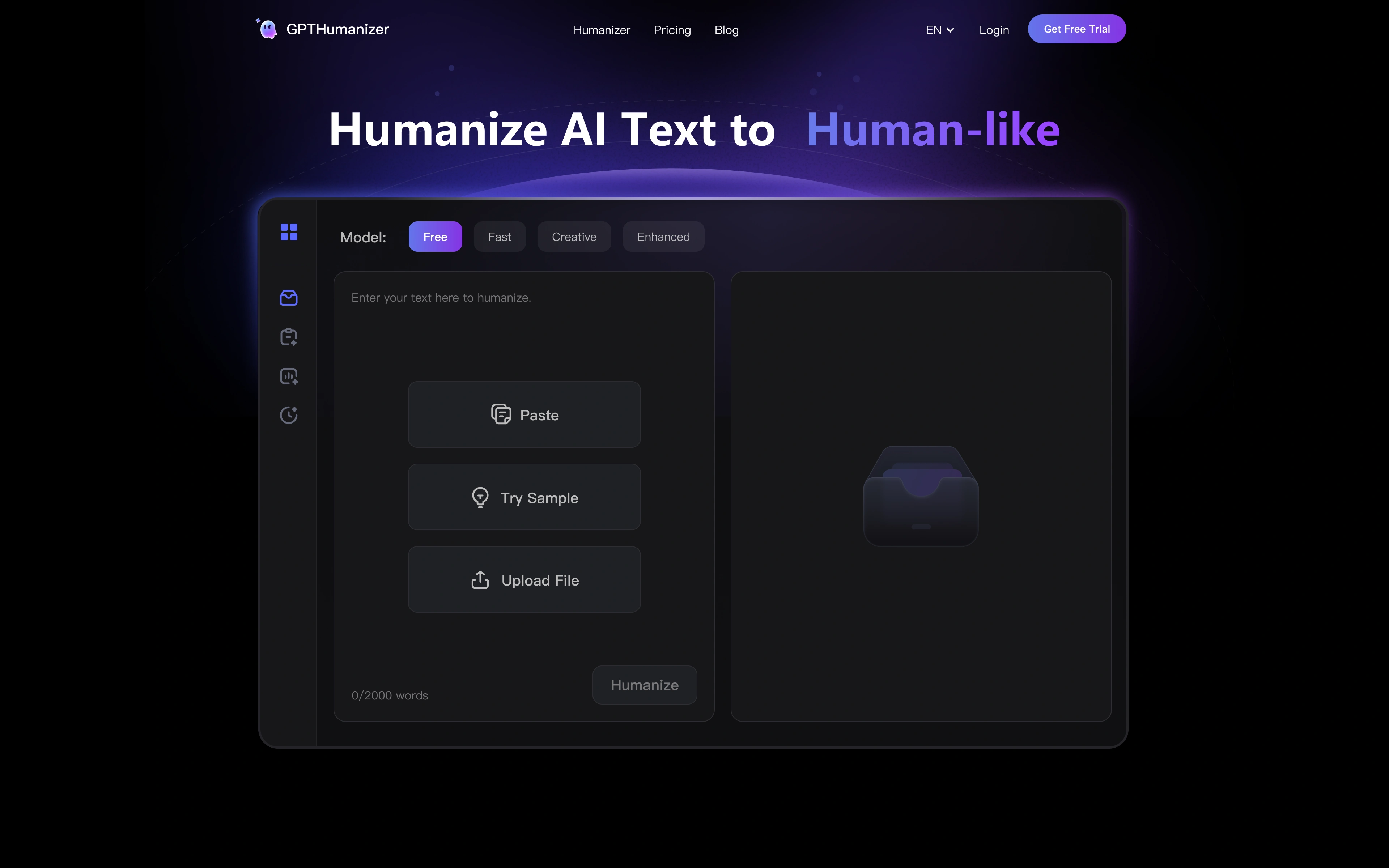
Let’s take a look at a rough example of how these tools can work:
Original AI Text: "Artificial intelligence has significantly impacted various industries across the global economy. This transformative technology provides numerous benefits including increased operational efficiency and improved accuracy in decision-making processes. Organizations worldwide are actively implementing comprehensive AI solutions to streamline their operations and enhance overall productivity levels. From manufacturing and healthcare to finance and retail sectors, businesses are leveraging machine learning algorithms, automated systems, and predictive analytics to optimize workflows. These advanced technological implementations enable companies to reduce human error, accelerate data processing, and deliver superior customer experiences. As AI continues to evolve, organizations that embrace these innovations position themselves for competitive advantages in their respective markets while driving sustainable growth."
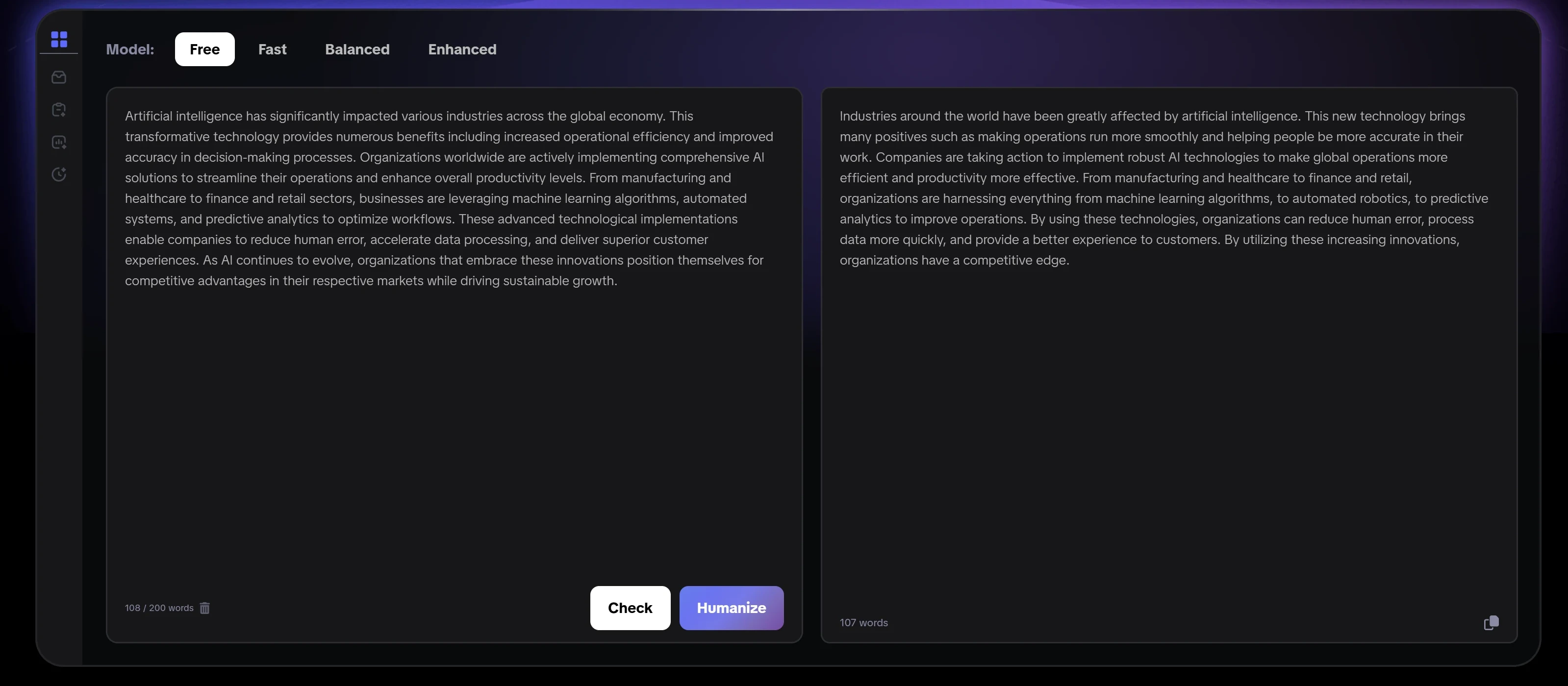
Enhanced Version: "Industries around the world have been greatly affected by artificial intelligence. This new technology brings many positives such as making operations run more smoothly and helping people be more accurate in their work. Companies are taking action to implement robust AI technologies to make global operations more efficient and productivity more effective. From manufacturing and healthcare to finance and retail, organizations are harnessing everything from machine learning algorithms, to automated robotics, to predictive analytics to improve operations. By using these technologies, organizations can reduce human error, process data more quickly, and provide a better experience to customers. By utilizing these increasing innovations, organizations have a competitive edge."
The results speak for themselves. The enhanced content reads naturally, features diverse sentence structures, and incorporates conversational elements that feel truly human, but don’t change the meaning of the original content.
And when we pasted it into QuillBot’s detector? Just look for yourself: it reads as human-made content.
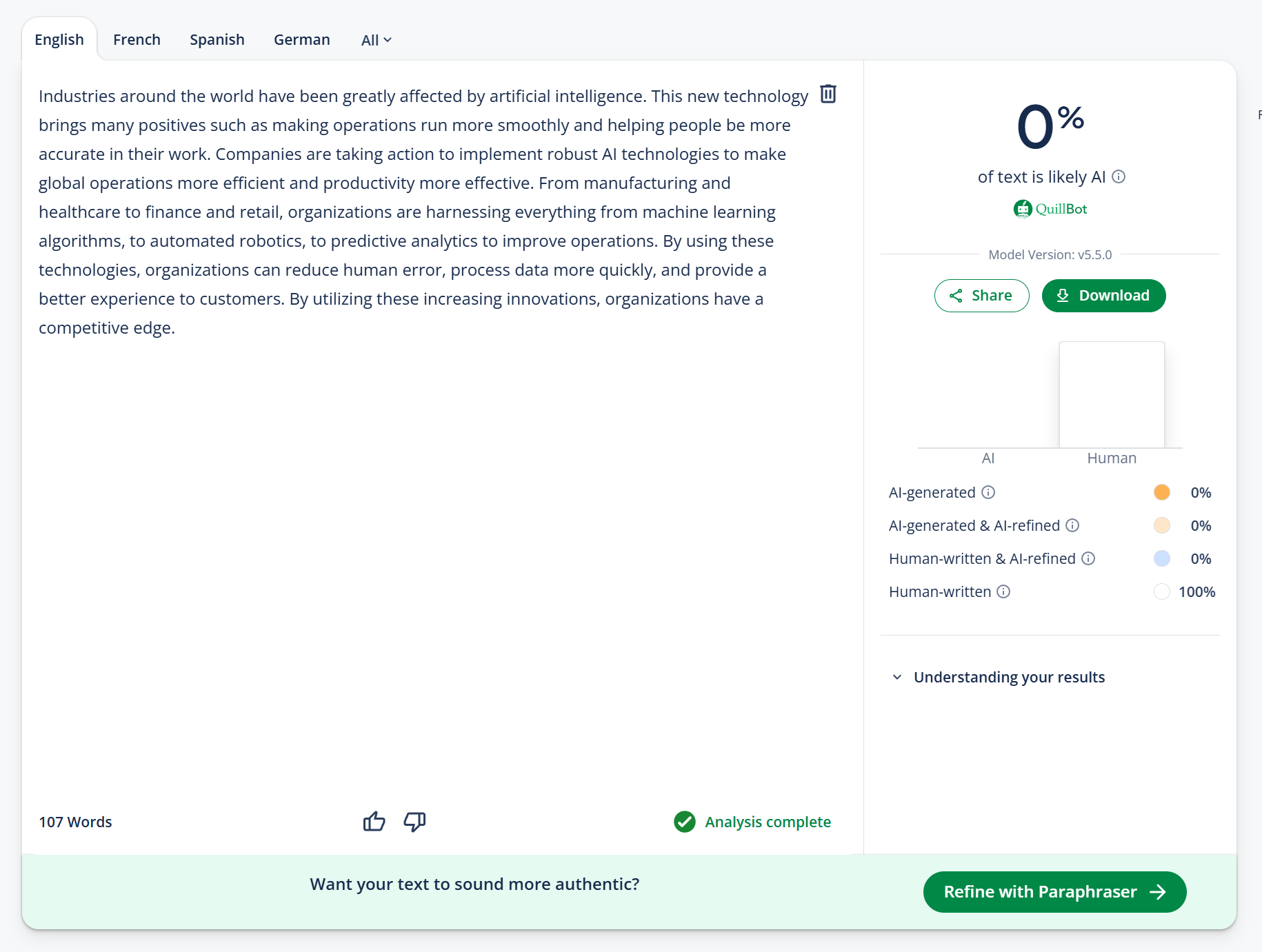
But GPTHumanizer can do so much more than that. It doesn’t just swap around words, it grasps context, it keeps things professional when needed, and more.
Appropriate Use Cases
Content Professionals: Writers and marketers can use enhancement tools to improve draft quality while ensuring proper attribution of AI assistance and transparency in their processes.
Educational Settings: Instructors can demonstrate responsible use case applications of AI tools in their field, while emphasizing the importance of academic integrity and proper attribution of AI assistance.
Business Communications: Organizations can maintain content quality standards while implementing clear policies regarding AI tool usage and transparency.
Essential Guidelines for Responsible Use
● When considering the use of content enhancement tools, professionals should always:
● Be transparent about any use of AI assistance.
● Adhere to institutional policies regarding AI tools
● Ensure compliance with academic integrity standards
● Properly attribute AI assistance as required
● Use these tools as a supplement to, and not a substitute for, human expertise and judgement
These tools serve legitimate professional needs when used responsibly and transparently, supporting quality content creation while upholding ethical standards.
The Evidence: Is QuillBot AI Detector Accurate?
After a rigorous and holistic review, our answer to the question “Is QuillBot AI detector accurate?” is clear:
QuillBot is reasonably accurate when detecting basic AI but has serious limitations for detection of more advanced or hybrid content. It is best used as a screening tool and for educational awareness but should not be solely relied on for content verification when it is critical.
False positives and its limitation detecting more creative human writing mean that it should be used in combination with human judgment and validation using other tools.
Organizations in need of more reliable content quality assurance may choose professional-grade solutions that provide comprehensive approaches to meeting content quality requirements while upholding ethical AI use.
Related Articles

AI Detection in Academia: Challenges, Ethics, and the Future
Explores the technical limits, ethical risks, and academic implications of AI detection, and GPTHuma...

How Turnitin Detects AI in 2026: What Students Must Know to Avoid False Flags
A clear, student-focused guide to how Turnitin detects AI-like writing in 2026, why false positives ...
